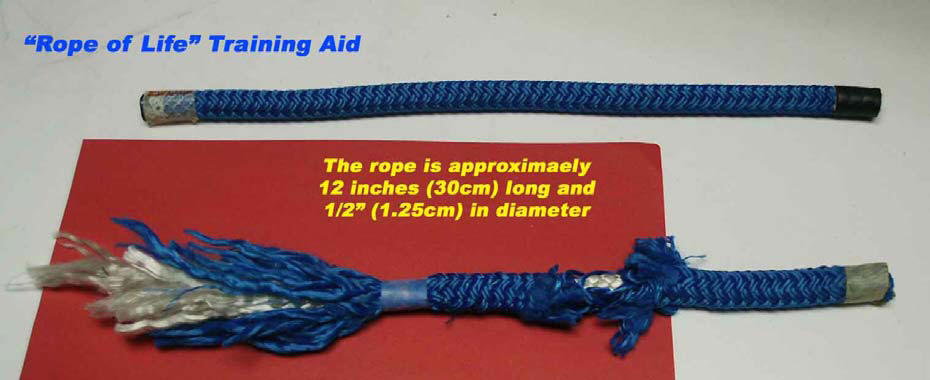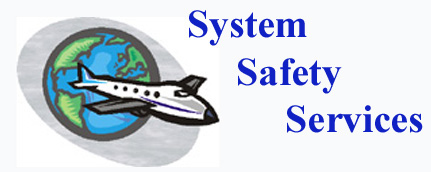|
The Rope of
Life Training Aid

This training aid is very useful to
illustrate the conscious/subconscious decision making process. You may fabricate
it yourself, or we will be pleased to provide you with a ready-to-use aid.
This model is used in Human Performance
in Maintenance - Part 1 to help illustrate our decision making process as
explained below:
a) The white (inside) strands are the
subconscious mind while the outside (Blue) are our conscious mind. – Show rope
with white strands inside the blue.
b) The conscious mind is usually in control but the subconscious is always
there, unseen and part of all decision making.
c) When we are first born, we are strictly an emotional creature without the
ability to make rational decisions – Show white strands at the bottom of the
rope.
d) Involve participants by finding out the name of a child of one of the male
participants and ask: “If at two weeks old I was to take Mary (babies name) and
give her to Joe (another very different participant in the class) would Mary
know that Joe is not her father? Answer= No as it takes 6 weeks to two months
for the babies to recognize the father.
e) The baby (name) has only an emotional mind and is not yet able to reason.
f) But one day about two months later, the baby (name) has been fed and has a
clean diaper and as the father (name) walks past the crib, the baby (name)
begins to cry. The father (name) picks her/him(name) up the baby (name) thinks
“Maybe I can train this person to do what I want after all. The beginning of the
rational conscious mind.
g) Explain how over the years, the conscious rational mind (Blue strands)
develops until as an adult, it now, for the most part controls our reasoning.
h) As the conscious mind develops (blue), the emotional mind (white) becomes
part of the subconscious.
i) In the subconscious are early life decisions (ELDs) that will also influence
our adult decision making.
j) ELDs are emotional decisions we make as a child (mainly between the ages of 1
and 3) that influence our adult decision making) For example: As a child I
received a mouthful of pepper by accident. I have no recollection of this
incident but as an adult, I do not like pepper and will never put pepper on
anything I eat.
k) Finally, show the hole in the rope and explain that this is when the
subconscious takes control for a short time. We use the example of one of the
participants hitting his thumb with a hammer by accident. All agree the emotion
of anger would take control shortly after the wrong nail gets hit by the hammer.
l) Ask how long did it take for the subconscious to take control? All will agree
very quickly (about 1 second)
m) Next how long will it take for the Conscious Adult mind to get back in
control? Most will agree it will take much longer.
n) Thus; the subconscious (emotional) is very quick to react but the conscious
(rational) is much slower to make a decision.
Click on the link to view the
PowerPoint Presentation that can be used to
help demonstrate this model.
You may order this model for $45 using the order form below.
Should you wish to build your own Model,
click here for the directions.
Order Form
| 
![]()